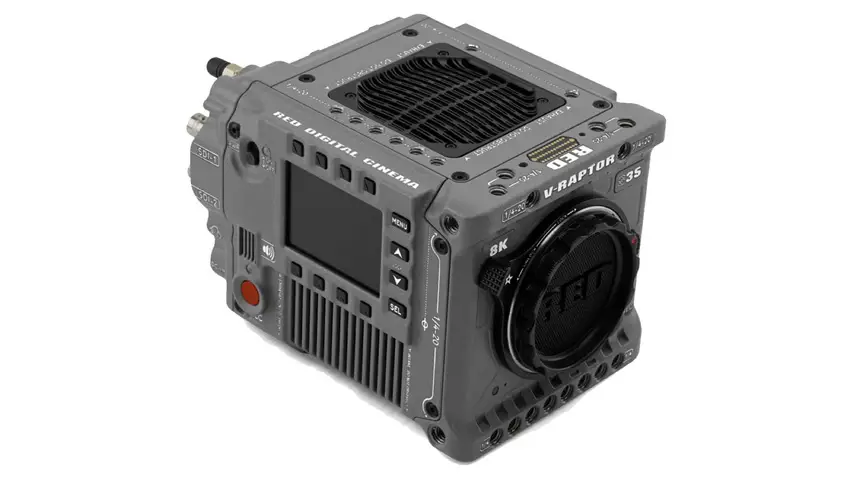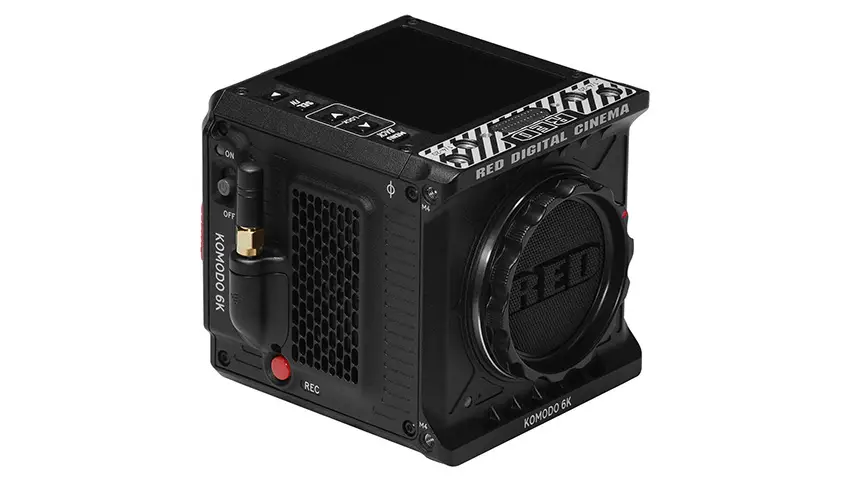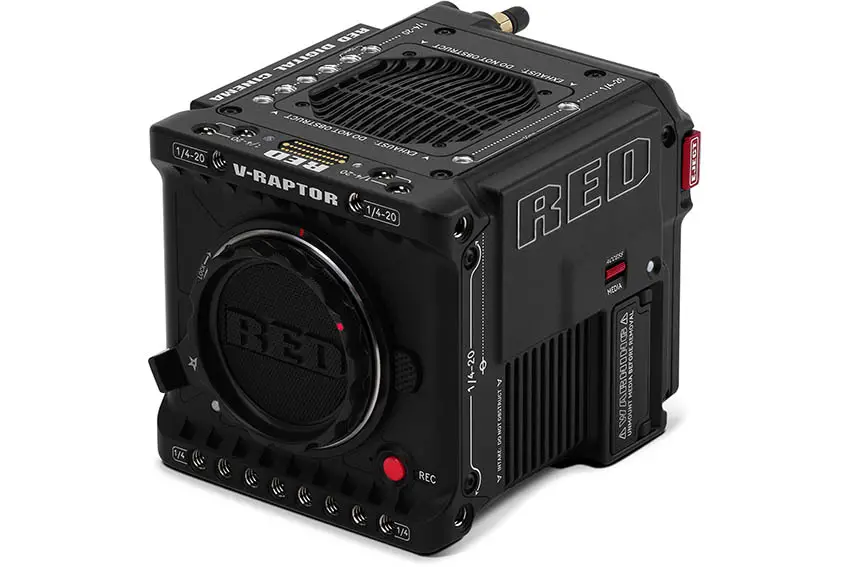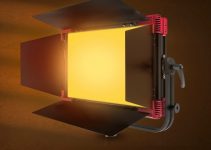Since the introduction of the RED KOMODO 6K we have reached the DSMC3 generation of cinema cameras. The full lineup is starting to take shape with the release of the V-RAPTOR and V-RAPTOR XL.
Now, we even have a special edition RED RHINO S35 that’ll record in 8K up to 120p with all the regular things you would expect from a RED camera.
If you are curious to see how the RHINO compares to the V-RAPTOR and KOMODO or just want to check out some sweet 8K footage shot with the camera you will be very interested in this comparison from CVP.
Image Sensor
A nice thing about RED’s latest cameras is that they share so much functionality and menu designs. The RHINO (which is a V-RAPTOR with S35 sensor) has an identical body and control scheme.
The RHINO even matches the V-RAPTOR VV when it comes to resolutions and frame rates – up to that impressive 8K 17:9 at 120 fps. Having a Super 35mm sensor did allow them to shave $5,000 off the cost.
This is similar in how RED configured their DSMC2 lineup with the MONSTRO being Vista Vision and the HELIUM being Super 35mm.
Looking more closely at the RHINO’s sensor you will find that it is a touch smaller than even the KOMODO at just 26.21 x 13.82mm.
There is a very specific audience for the RHINO – those who want or need the benefits of a fully-featured cinema camera (like the V-RAPTOR) but appreciate the Super 35mm format for the extra reach or lens support.

Image Credit: RED
Resolution and Frame Rates
Being very similar to the other RED cameras you will experience cropping as you reduce the resolution and make use of faster frame rates. Windowing will allow you to go from 8K 17:9 at 120 fps to 4K 17:9 at 240 fps to 2K 17:9 at 480 fps.
Obvious downsides to cropping don’t change though. More extreme aspect ratios can retain horizontal resolution while still improving frame rates.
The sample footage they demo in the video does look amazing. Proper lenses and technique will allow you to capture top-quality footage with the RHINO.
Rolling Shutter
An impressive improvement for the Vista Vision V-RAPTOR was excellent handling of rolling shutter. The RHINO S35 performs very similarly.
Obviously, the global shutter of the KOMODO doesn’t have any rolling shutter issues. Still, the rolling shutter of either V-RAPTOR camera is impressive.

Image Credit: RED
Detail
8K is the top resolution and when combined with RED’s REDCODE RAW format with various compression ratios you’ll be able to capture imagery with a stunning level of detail. The compression options will be helpful for ensuring you have the ability to choose the best setting for the scene.
Highly detailed exteriors might call for lower compression while your simple B roll in the studio can save space with higher compression.
Color
All the DSMC3 cameras, including the RHINO, share a color science. This is great since the current iteration simply improved on an already great profile. The use of raw will give the flexibility you would expect in post.
While all the cameras can match up very quickly you will see differences when under and overexposed.
Dynamic Range
Setting each camera to ISO 800 and mounting a ZEISS Otus 55mm they shoot the same scene and only change the aperture to create the over and underexposure.
All the clips are normalized in Resolve by matching exposure on the middle grey of the card.
With overexposure it is interesting because it seems like the RHINO actually performs better than the V-RAPTOR VV.
Performance is similar at up to 4 stops though after that you’ll start to see some clipping on the chart. The S35 RHINO doesn’t start clipping for another 1/3-2/3 stops after the VV.

Image Credit: RED
Underexposure has some more differences. The V-RAPTOR VV, unsurprisingly, performs the best here. Compared to the KOMODO the new S35 sensor in the RHINO does seem to handle shadows a bit better. There’s more detail and colors are staying true for longer.
Noise
Since you won’t be getting any noise reduction in camera (which is generally a good thing) you’ll want to make sure your exposures are good and then make use of various post-production tools. The raw formats give plenty of control over ISO in post as well.
In low-light conditions they would not recommend pushing the ISO above 3200-6400. Going above that will give you some quite noisy imagery with a touch of chroma noise.
Other Features
Being a V-RAPTOR the RHINO S35 does keep features like pre-record with a dedicated cache. It is also a grey special edition—the only version available today.
Deciding between this camera and others will depend on your own needs and sensor demands. The Super 35mm sensor has its advantages for certain markets, such as broadcast, sports, wildlife, and macro/product.
It is much more fully featured than the cheaper KOMODO as well and the image quality is superior.
What do you think about the RHINO?
[source: CVP]
Order Links:
- RED V-RAPTOR RHINO 8K S35 Cinema Camera (B&H)
- RED KOMODO 6K S35 Cinema Camera (B&H)
- RED V-RAPTOR 8K VV Cinema Camera (B&H)
- RED V-RAPTOR XL 8K VV Cinema Camera (B&H)
Disclaimer: As an Amazon Associate partner and participant in B&H and Adorama Affiliate programmes, we earn a small comission from each purchase made through the affiliate links listed above at no additional cost to you.



